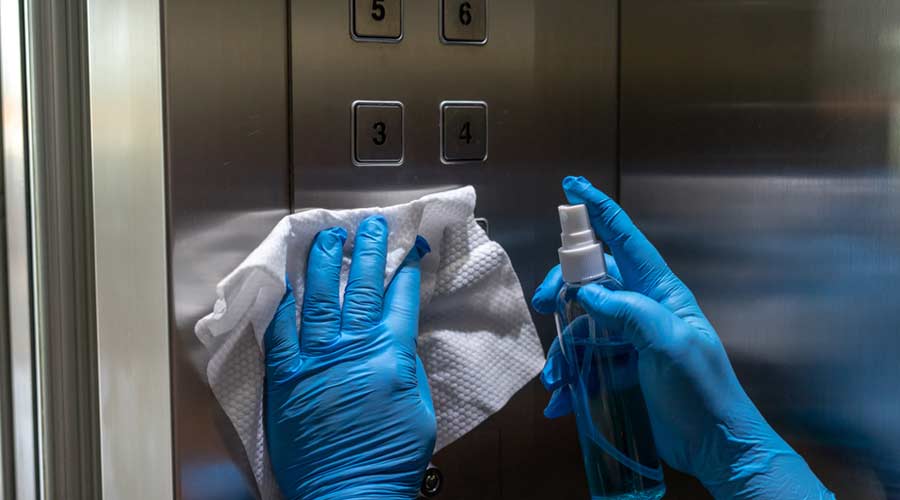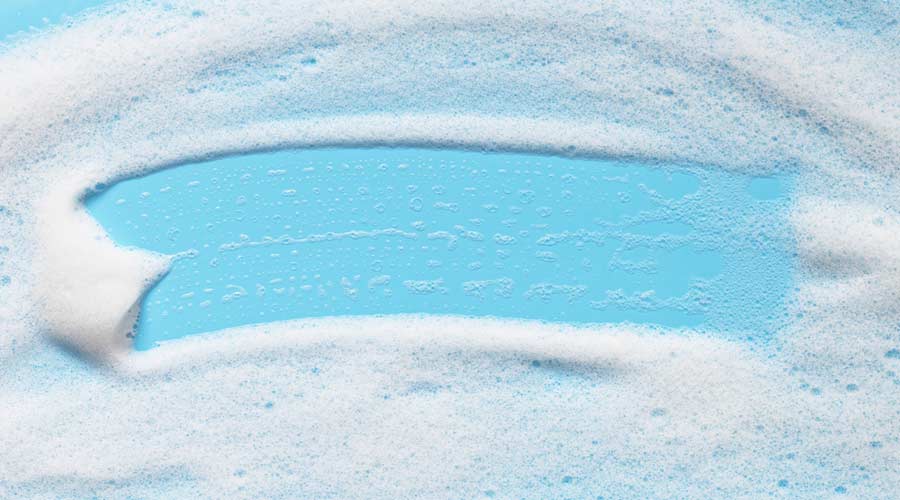
Hand hygiene is in many ways the key to keeping building occupants healthy. It’s the most effective tool that facility managers have in their toolbox to make a difference.
“The general public tends to get lax on obvious infection prevention techniques unless there’s a current issue in the news,” says Bill Allen, territory manager for Fagan Sanitary Supply. “Often, the most basic thing — handwashing — is the most overlooked.”
It turns out that the key factor in hand hygiene, ahead of even cost, is psychology. For example, legend has it that Walt Disney studied how long someone would walk before throwing their candy wrapper on the ground. The findings are why trashcans are now placed every 30 feet throughout the grounds of Disney parks. Their convenient locations mean they are more likely to get used.
The same study can be applied to hand hygiene. What factors inside the restroom determine whether or not someone washes their hands?
For starters, making sure soaps and sanitizers are easy to use and convenient to access are the best ways to ensure that facility occupants will wash or sanitize their hands adequately, keeping themselves and those around them healthy. For instance, making sure that soap dispensers are within arm’s reach of the faucet — so users don’t have to go out of their way to access them — increases the likelihood of their use.
Although these suggestions night seem small or common sense, they are essential. The use of soap increases the likelihood of killing germs and keeping people healthy.
Sudsy Solutions
Although touch-free restroom options aren’t new, they gained traction with facility occupants in the height of the pandemic. Some experts believe that outfitting restrooms with these preferred dispensers increased handwashing compliance. But those same restrooms have since seen a decrease in use, suggesting the dispenser had little to do with use.
This is why industry experts warn facility cleaning managers from getting distracted by trends. According to Allen, touch-free soap dispenser options shouldn’t be a concern. Instead, he recommends manual dispensers over battery-operated touch-free options. Manual dispensers require less maintenance, no additional battery costs/storage, and less labor time, especially in larger facilities that feature many dispensers.
“In the end, users are going to be using the soap, using water to rinse, and paper to dry, so touching the soap dispenser before all that happens isn’t an issue,” says Allen.
Inside the dispenser, the clear choice for type of soap — for both building occupants and cleaning teams alike — goes to foam. Some customers might prefer gel or liquid, but overall, foam soaps are used more, and save time and money for cleaning teams over any other choice.
“First off, foam is definitely less messy, which is great for occupant perception and labor when cleaning the restroom,” says Allen. “Second, less of it is used per customer. Not only does that save money on purchasing, but that’s less custodial time put into checking soap and changing out cartridges.”
Neal Duffy, a third-party consultant through CleaningCorrect, Inc., agrees, attributing the potential cost savings to the visual aspect of the foam dispensing.
“Foam dispenses as a pillow in your palm, so users tend to pump only once versus two or three times for a gel or a lotion to get what looks like enough. This also results in a strong return on investment for departments,” Duffy says. “Plus, it’s pre-lathered, so users feel like they’re saving time as well, which encourages the use of the product.”
Still, some facility occupants are concerned that soaps and sanitizers could dry skin, but experts are quick to correct the misconception. Most soaps and sanitizers now include moisturizers, but it’s important to stress their original purpose.
“The purpose of soap is to effectively and as cost-efficiently as possible stop the spread of germs,” says Allen. “If people are worried about soft hands, they can moisturize after washing.”
Similarly, colors and fragrances are specialty requests that some building occupants ask about to encourage use. Cleaning executives in smaller settings might entertain such suggestions (Allen had one school insist on green soap to match their school colors), but those operating larger facilities are more concerned about cost per push.
No matter what soap is used, keeping dispensers filled is a must. Empty dispensers consistently rank high on the list of pet peeves for building occupants, and messy, inconvenient refilling systems can make frontline workers crazy.
“One of the biggest problems is when facility customers focus on the price of product versus the cost of product not being used effectively,” Duffy says.
For instance, sealed sanitary cartridges cost a bit more than bulk refills, but the difference is well worth the expense. Not only will it save time in the efficiency for personnel, but cartridges are more sanitary.
“Cartridges deliver a clean, non-contaminated product,” says Duffy. “Refillable bulk soap has been found to be contaminated by things like E. coli.”
Hand Drying and Sanitizing Options that Facilites Support

 The Down and Dirty on Cleaning in Virus Season
The Down and Dirty on Cleaning in Virus Season How Surfactant Use is Expanding in Commercial Cleaning
How Surfactant Use is Expanding in Commercial Cleaning